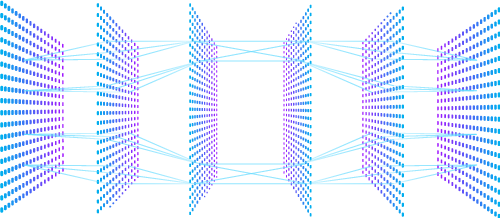What Are CNN's (Convolutional Neural Networks)
Convolutional Neural Networks (CNNs) are a type of deep neural network commonly used in computer vision tasks, such as image classification, object detection, and segmentation. CNNs are designed to automatically learn hierarchical representations of visual features from raw pixel inputs, enabling them to identify and classify objects within images.
At a high level, CNNs consist of three main components: convolutional layers, pooling layers, and fully connected layers. Here’s how each of these components work:
Convolutional layers: Convolutional layers are the core building blocks of a CNN. They consist of a set of learnable filters, which slide over the input image to extract local features. Each filter is a small matrix of weights, which are learned during the training process. By sliding the filter over the input image and computing the dot product at each position, the convolutional layer generates a feature map that captures local patterns in the image.
Pooling layers: Pooling layers are used to reduce the spatial size of the feature maps generated by the convolutional layers. They typically use a max or average operation to downsample the feature maps, reducing the number of parameters in the network and helping to prevent overfitting.
Fully connected layers: Fully connected layers are used to map the learned features to the output class labels. They take the flattened feature map generated by the convolutional and pooling layers and pass it through a series of dense layers that compute the final class probabilities.
In addition to these main components, CNNs may also include other layers, such as activation functions, normalization layers, and dropout layers, which can help improve the performance of the network.
CNNs are trained using a process called backpropagation, where the network learns to adjust the weights of the filters based on the error between the predicted output and the true output. With enough data and training, CNNs can learn to recognize complex patterns and features within images, enabling them to achieve state-of-the-art performance on a variety of computer vision tasks.





